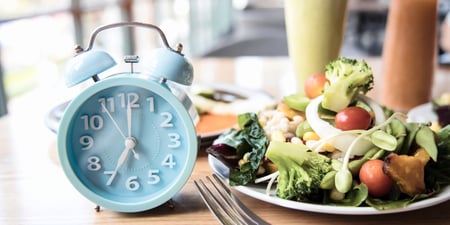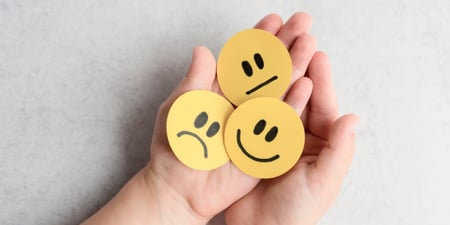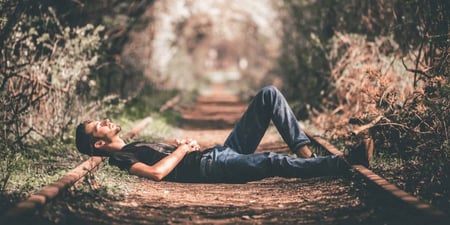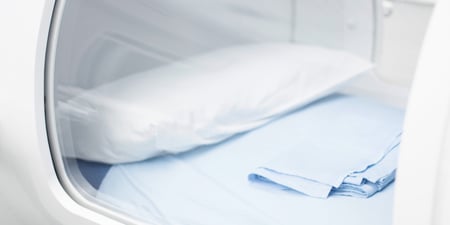Result for ‘massage’ in Therapies
52 items
...massage is a variation of Swedish massage[1] that involves the use of smooth, heated stones during the therapy. Typically using a type of volcanic rock, called basalt[2], the massage therapist will either place the hot stones on specific parts of the body or move them while performing the massage. The purpose of the localised heat and weight from the stones is to warm and relax the muscles[3] . This enhances the therapeutic effects of manipulation[4] by the therapist.
Hot stone massage is believed to have its roots in a number of ancient health traditions[5]. Many believe that this therapy originated from India’s holistic health system, “Ayurveda,” where smooth stones were collected from riverbeds and used in healing and massage.
Ancient Japanese and Chinese practices have also used warm stones to improve the functioning of internal organ systems. Similarly, in Native America and Hawaii[6], healing practices involving hot stones have been used for many years.
Modern day hot stone massage therapy was ‘re-discovered’ in 1993 by a massage therapist named Mary Nelson. It has since become a popular style of therapy that is used practice around the world.
Choosing a qualified practitioner who is registered with a professional association, such as Massage & Myotherapy Australia[7], is important to ensure the highest standard of treatment. All massage practitioners who are members of this national organisation have formal qualifications and are obliged to adhere to a Code of Ethics. A wider evidence base is needed on the clinical benefits of hot stone massage, although one study involving patients with kidney failure has shown that this therapy may assist in improving sleep quality[8].
There is also evidence to suggest that both heat and pressure, the two techniques used in hot stone massage, may offer both therapeutic and restorative benefits for the body[9].
One meta-analysis has shown that massage therapy may be an effective treatment[10] option for pain and may assist in improving anxiety and health-related quality of life. Moreover, it has also been suggested to reduce stress and promote mental health[11].
Heat therapy[12] is another widely accepted technique that may assist in decreasing joint stiffness, reducing pain, relieving muscle spasms and assist in healing by increasing blood flow to the affected area. A hot stone massage typically lasts between 60 and 90 minutes. The therapist will heat the stones to a therapeutic temperature prior to your treatment. These will then be placed on the specific parts of your body, providing a targeted release of specific muscles.[13] Massage oils will also be applied to your skin, and the therapist may apply Swedish massage techniques[14] such as kneading, long, flowing strokes or deep circular motions, to the different parts of the body.
To get the most benefit from your massage, it is recommended that you refrain from eating prior to your session and stay hydrated by drinking both before and after your massage. During your session, maintain open lines of communication with your therapist and let them know if the temperature of the stones is uncomfortable or the pressure of the massage is too intense.
Hot stone massage is generally considered safe when performed by a trained and licensed massage therapist.
As with any exercise or wellness program, please consult your medical professional before commencing hot stone massage...
...massage is now widely recognised as an effective structural and energetic form of therapy. He describes it as “focused intention” therapy that allows the natural healing methods of the body to flow again, bringing vitality.
A structural and energetic form of therapy, this style of massage addresses issues of the musculoskeletal, digestive and nervous systems.
The three elements it draws from are:
Zen shiatsu - from Traditional Chinese medicine, including acupuncture techniques without needles such as cupping, moxibustion and lifestyle advice.
Traditional Thai massage - releases muscular tension and energetic blockages.
Osteopathic techniques - including joint mobilisation, connective tissue patterns and fascia unwinding.
Zenthai bodywork has also evolved into a fluid, movement-based practice known as Zenthai Flow[3] that reflects “a state of trust, curiously exploring and fully engaging in the moment “.
The majority of Zenthai shiatsu massage therapists[4] in Australia are listed on Gywn’s website. Since 2001, he has trained more than 400 people in the practice. Common conditions this form of bodywork helps with include lower back, neck and shoulder pain; digestive complaints; joint mobilisation; energy depletion and the immune system.
Before a session begins, you should inform your therapist of any injuries or areas that cause you concern. Wear loose, comfortable clothing.
In Zenthai Shiatsu, the whole being is treated[5] not just the presenting symptom – this aids the practitioner to balance the strengths and weaknesses that present themselves, such as aches and pains, digestive or hormonal issues, sleeping or breathing difficulties as well as a wide range of emotional and mental issues.
The session generally lasts for 90 minutes and takes place on a padded mat on the floor, with support pillows as aids for different positions.
A combination of acupressure massage, Thai flowing massage techniques, wholefood dietary advice, Qi yoga correctives and moxibustion are used in the session.
Shiatsu translates as ‘finger pressure’ although the practitioner will use thumbs, fingers, palms, elbows, knees and feet to apply their own body weight to stimulate the patient’s flow of energy in their body.
As with any exercise or wellness program, please consult your medical professional before commencing Zenthai shiatsu massage. If you have an injury, health issue, or any concerns at all, do advise your therapist who will be happy to address these and make sure the session is personalised to your individual requirements.
Bodywork with a focused intention - integrating Zen shiatsu, Thai massage...
...massage is offered with the spirit of Aloha[1], or love, peace and respect. Lomi[2] means masseur and also "to rub, press, squeeze or massage”.
Also known as Kahuna bodywork[3] or loving hands massage, this full-body flowing massage employs long, deep, rhythmic touch in rhythm with respiration. Lomi Lomi is similar to Swedish massage with an added meditative element. The Lomi Lomi therapist integrates the client with music, centering breath and sweeping strokes. Lomi Lomi can relax the receiver into a deep delta brain-wave state for mental, physical and spiritual healing.
Lomi Lomi is an indigenous Polynesian practice that spread to Hawaii with the early settlers, and Auntie Margaret Machado[4] is believed to be the first Hawaiian to teach Lomi Lomi to non-Islanders. It encompasses many styles and schools, and differs according to the teacher and location. Other Lomi Lomi variations include those taught by Abraham Kawai’i[5], Mana Lomi®,[6] and Sacred Lomi Hawaiian Temple Bodywork.[7]
In Australia, to ensure the highest standard of treatment select a Lomi Lomi practitioner who is accredited in a bodywork modality with associations such as IICT[8], ATMS[9], MAA[10] or The Kahuna Training Guild of Australia[11]. These national organisations are committed to upholding excellence in practice, and require its members to undertake continuing professional development. Lomi Lomi provides the physical benefits of massage with additional mental and spiritual effects[12]. According to the Acupuncture Massage College[13], Lomi Lomi is reported to increase range of motion and flexibility, lower blood pressure, slow heart rate, improve posture and accelerate healing[14].
Lomi Lomi is also believed to activate ‘Mana’, or life-force energy and clear negative emotions. The long strokes used in Lomi Lomi make it particularly beneficial for supporting the immune response and promoting blood flow[15], which may aid in the detoxification and stimulation of the lymphatic system.
According to the American Massage Therapy Association, these flowing strokes are suited to supporting women during pregnancy and labour.[16] Lomi Lomi can also encourage relaxation, as the stretching produces a gentle myofascial release. A Lomi Lomi session can take one to three hours. Before a session starts, a qualified therapist should ask you questions about your health history and obtain your informed consent[17]. You should also advise your therapist of any injuries or areas that cause you concern.
It’s a good idea to have a little water and use the bathroom before a session. To prepare for the treatment, the therapist will give you privacy to remove clothing if pertinent, but do let them know if you’re uncomfortable with certain areas being uncovered or touched.
Lomi Lomi considers the client to be vulnerable during a massage, and an initial prayer is often chanted to create a caring connection and a sacred space at the commencement and close of the session. The therapist typically then places their hands on you for a few moments to calm and centre. You may be asked to breathe deeply and relax.
The therapist provides draping[17] with a sarong, sheet or towels, or may offer sessions where you are fully clothed. In a dynamic, rhythmic dance, oil is generally applied with long, integrating strokes to the whole body. They may also use gentle stretches, joint rotations and focussed pressure. Lomi Lomi practitioners may use various parts of the arms and legs for massage, as well as sticks and stones.
Traditional Lomi Lomi always includes abdominal massage because Hawaiian tradition considers the colon to be very important. Occasionally, the therapist may hum or sing[18] to amplify energy and promote the release of blockages in the body. Lomi Lomi practitioners may also ask their clients to alter their diets and engage in other self-help activities.
As with any exercise or wellness program, please consult your medical professional before commencing Lomi Lomi. If you have any concerns at all, also speak to your Lomi Lomi therapist, who will be happy to address these and evaluate whether Lomi Lomi is a suitable treatment for you.
Soothing holistic massage...
...massage techniques, and spiritual practices to promote holistic well-being. Rooted in Cambodia's rich cultural heritage, this modality offers universal benefits, making it accessible and valuable to individuals worldwide[1].
Kru Khmer healing is deeply embedded in Cambodian culture, with practitioners known as "Kru Khmer" serving as custodians of traditional medical knowledge. Historically, these healers have played a pivotal role in their communities, addressing physical ailments, emotional distress, and spiritual imbalances through a combination of herbal medicine, massage therapy, and ritualistic practices. Their expertise has been passed down through generations, preserving a holistic approach to health that emphasises the interconnectedness of body, mind, and spirit. Age-old techniques have also been preserved by some temples on Sastra or sugar palm leaves[2].
Traditional Khmer Medicine (TKM) is known as an integral part of the national health care system. It is based on centuries of local practice that depends considerably on Cambodia's rich biodiversity of medicinal plants[3].
While Kru Khmer is indigenous to Cambodia, its principles resonate universally. The practice underscores the importance of natural remedies and mindful bodywork, concepts that are increasingly sought after by individuals exploring Traditional, Complementary, and Integrative Healthcare (TCIH) pathways to wellness. Visitors to Cambodia, as well as those interested in global healing traditions, can gain valuable insights into holistic health by engaging with Kru Khmer practices. Engaging with Kru Khmer healing offers a multitude of benefits:
Physical Well-being: The use of herbal remedies addresses various ailments, while massage techniques alleviate muscle tension, improve circulation, and enhance overall physical health.
Emotional Balance: The integrative approach of Kru Khmer helps in reducing stress and promoting emotional harmony, contributing to mental clarity and resilience.
Spiritual Connection: Rituals and spiritual practices within Kru Khmer foster a deeper connection to oneself and the surrounding environment, nurturing inner peace and mindfulness.
These benefits are not confined to any specific demographic; individuals from all backgrounds can experience the positive impacts of Kru Khmer, making it a truly universal healing modality[4].
Recent studies show that these practices are particularly crucial in rural society. With an estimation of 40-50% of Cambodians from isolated villages still utilising local herbal medicine and traditional healers as their initial form of treatment, not only out of convenience but also strong cultural trust[3][5]. Such everyday reliance underscores Kru Khmer's status as accessible, community-oriented health care at a reasonable cost. A typical Kru Khmer session is a personalised experience, tailored to meet the unique needs of each individual. Sessions often begin with a consultation, where the practitioner[6] assesses the client's physical and emotional state. This is followed by treatments that may include:
Herbal Remedies: Herbal remedies are at the heart of Kru Khmer healing. Practitioners draw on an extensive pharmacopoeia of native Cambodian plants—such as turmeric, lemongrass, ginger, moringa, and galangal—to create tailored treatments for a wide range of conditions, from digestive disorders and inflammation to skin diseases and respiratory issues. These remedies are typically administered as teas, poultices, oils, or balms. The selection and preparation of herbs is highly intuitive and deeply rooted in ancestral knowledge, often passed down orally through generations. This form of natural medicine not only supports physical recovery but also aligns the body with its natural rhythms, echoing contemporary understandings of phytotherapy and integrative herbal medicine[5][7].
Cambodia's traditional herbal practices are also documented and preserved through government and NGO activities. The National Center of Traditional Medicine (NCTM) facilitates research activities actively, while conservation activities emphasise biodiversity for preserving raw materials for future use in traditional medicine[8]. These activities ensure that Kru Khmer healers' knowledge will be sustainable in the near future.
Massage Therapy: Kru Khmer massage is an energetic and therapeutic practice that blends acupressure, stretching, and rhythmic palm techniques. Drawing comparisons to Thai and Shiatsu massage...
...massage specific areas on the hands, as well as the ears, but the majority of reflexology practice focuses on the feet[2].
The oldest record showing people having their hands and feet attended to is believed to come from the ancient Egyptian tomb of Ankmahor, estimated to be more than 4,000 years old[3]. Huang Di Nei Jing (whose title can be translated The Yellow Emperor’s Classic of Internal Medicine), the definitive text on traditional Chinese medicine, describes a connection between the feet and the flow of qi[4] (vital life energy) through the rest of the body.
Near the end of the 19th century, Sir Henry Head, an English neurologist[5], observed a connection between sensitivity in particular areas of the skin and disorders of corresponding organs. Several years later, a surgeon in the US named William Fitzgerald identified 10 longitudinal ‘zones’ of the body[6] which could be stimulated in key locations with the aim of bringing pain relief. Dr Fitzgerald’s ‘zone theory’ was the basis of experimental work by physiotherapist Eunice Ingham, who systematically mapped the relationship between areas of the feet and disorders of the body[7]. Published in 1938, her book (titled Stories the Feet Can Tell)[8] became the basis for the Ingham School of Reflexology -- one of the most widely practised forms[9] of this modality today. There are anecdotal reports of foot reflexology treatment having beneficial effects for a variety of health conditions[10]. As both a non-pharmaceutical and non-invasive modality, it has been proven to reduce dependency on opioids for pain relief[11]. Reflexology has also been compared to back massage therapy for improving sleep quality[12] in people undergoing dialysis, with results indicating reflexology may be more effective than back massage in this context.
There is evidence to suggest reflexology may be beneficial in treating the symptoms of multiple sclerosis[13], and the results of one study indicate it may help reduce both mental and physiological symptoms[14] associated with premenstrual syndrome.
Research suggests reflexology may be associated with an immediate reduction in anxiety and pain level experienced by cancer patients[15]. There is evidence to suggest that reflexology may reduce anxiety in people who have had coronary bypass[16] surgery. Studies suggest that reflexology may be associated with a shorter duration of labour[17], as well as a decrease in the intensity of labour pain[18]. To begin, your reflexologist will ask you about your medical history, and any specific symptoms[19] that might be causing you concern. Reflexology is not intended to diagnose illnesses, and it is not a treatment[20] for health issues of the feet, such as ingrown toenails or corns, which should be addressed by a podiatrist.
You will need to remove your shoes and socks, and you will usually be invited to lie down on a massage table. The practitioner might help you relax by gently washing your feet[21], then begin massaging and stimulating various points on your feet with their thumbs and fingertips. Your reflexologist will work through all the key areas of your feet to promote whole-body wellness[22] and energy balance, and they may also massage...
...massage.
A leading form of the practice is Biodynamic Craniosacral Therapy[6], which honours the origins of this work in osteopathic medicine yet presents a unique specialty field with a deeper understanding of energy dynamics within the therapy.
Craniosacral Biodynamics goes beyond more mechanical approaches in craniosacral therapy by emphasizing the energy dynamics and processes that organize body functions. A clear understanding of these energetic processes takes therapeutic work to profound levels.
Dr. William Garner Sutherland[7], the founder of cranial osteopathy, clearly described a primary energy impulse in the body that he called the Breath of Life. This primary energy expresses potency and an inherent ordering principle into the cerebrospinal fluid and structure of the body. Although there is debate about the mechanism by which craniosacral massage is believed to work[8], the therapy has been consistently reported to result in positive health outcomes. It continues to be a widely practised and respected modality, represented by industry associations in Australia[9] and worldwide.
Research suggests craniosacral therapy may offer effective medium-term pain relief[10], as well as possibly reducing anxiety levels, improving healthy sleep and quality of life[11] for people with fibromyalgia. There is evidence to suggest craniosacral therapy may alleviate problems of the urinary tract and improve quality of life[12] in people suffering from multiple sclerosis. The results of a randomised controlled trial suggest craniosacral therapy may significantly reduce chronic neck pain[13] and associated disability.
It has also been reported that craniosacral therapy may be an effective way to relieve migraine[14], although further research is recommended. Craniosacral therapy has also been studied as one of three modalities comprising a treatment program that may be effective in reducing the symptoms of post-concussive syndrome[15]. Check that the craniosacral therapy practitioner you wish to work with is registered with the Craniosacral Therapy Association of Australia. Members of this not-for-profit organisation are bound by a code of ethics ensuring the highest professional standards[16] and suitable qualifications for practitioners.
To begin, your craniosacral therapy practitioner will ask you about the health concern you are seeking treatment for, and might ask for an overview of your medical history. For the treatment, you will be invited to lie on your back on a massage table[17], and you will not need to remove any clothes.
If you are pregnant, or if you have any health condition that makes lying on your back less comfortable, you can lie on your side or receive the therapy in a seated position[18]. Your practitioner will lightly place their hands on or under your head, hips, back, and other parts of your body to tune into your cerebrospinal pulse.
During the treatment, which usually lasts about 40 to 60 minutes[19], your practitioner will give you a cranial massage and gently manipulate different areas around your neck, back and hips. This manipulation is intended to release tension or misalignment that might be impeding the natural flow of cerebrospinal fluid, as well as support the fluid’s circulation. In some cases, for example, if you’ve suffered a concussion, your practitioner might put on a glove and massage...
...massaged onto the skin.
It is believed that the practice of using aromatic plant oils to support healing and wellbeing was based on the discovery of ancient Egyptian artefacts[3] thought to have been used for extracting essential oils. In its modern form, aromatherapy dates back to the work of a French chemist, René-Maurice Gattefossé, who coined the term in the early 20th century[4]. Gattefossé used lavender essential oil to successfully treat severe burns he sustained in a laboratory explosion.
The aromatic compounds that give essential oils their characteristic fragrances can also have physiological and emotional effects[5]. It is very important to remember that even though they come from plants, these aromatic oils contain potent chemicals that can be toxic if ingested and can cause burns or irritation if they come in contact with the skin in their pure form[6]. Aromatherapy oils must be diluted in a suitable carrier oil if used for massage, and combined with a dispersant[7] if added to your bath. It is also recommended to never consume essential oils by mouth[8], even in a diluted form. At the sensory level, aromatherapy is believed to affect the limbic system of the brain, which may stimulate the release of neurotransmitters that make you feel relaxed and peaceful, or energised and motivated[9], depending on what oils are used. Research indicates that aromatherapy may significantly promote calmness and reduce agitation in elderly people[10] with severe dementia.
There is evidence to suggest aromatherapy massage may help alleviate anxiety and depression in cancer patients[11] for up to two weeks after treatment. Aromatherapy may also have beneficial effects on sleep quality in people with advanced cancer[12].
The results of a study comparing the application tea-tree oil with a synthetic acne treatment suggested that while both formulations may be effective in treating acne[13], there were less side effects associated with using the essential oil. There is evidence to suggest aromatherapy may have significant benefits for pain reduction, especially related to surgical procedures or childbirth[14]. Your aromatherapist will start by asking you about the condition you wish to treat, as well as enquiring about your medical history[15] and any known allergies that you may suffer from. The practitioner will then choose a combination of essential oils that are believed to have beneficial effects[16] for your health concern.
A practitioner who combines massage with aromatherapy oils uses a carrier oil such as fractionated coconut oil[17] to dilute the purified extract to a safe concentration. Your aromatherapist will then massage...
...massage and stretches to hot or cold packs, as well as treatments such as hydrotherapy and acupuncture. Some physiotherapists also utilise sophisticated methods including laser therapy[5] and transcutaneous electrical nerve stimulation (TENS)[6].
Different types of physiotherapy are specialised for addressing discrete categories of health concerns. The various branches of physiotherapy can support people born with disabilities, those suffering from sports injuries, recovering from stroke or other neurological problems, or who have chronic health concerns[7] such as asthma or diabetes. Other physiotherapists are trained to help children who are facing developmental challenges[8] with various tasks requiring physical coordination, such as learning to walk.
The holistic aspect of this modality is an important part of the physiotherapy definition: practitioners consider an injury or other impediment to healthy movement in the context of your overall wellness[9]. Physiotherapists often work alongside other health professionals such as GPs and medical specialists, in a variety of settings such as specialised clinics, aged-care facilities and hospitals[10]. In Australia, physiotherapy is regulated by the Australian Health Practitioner Regulation Agency (AHPRA)[11]. In a general sense, physiotherapy may represent an alternative to surgery or medication[12] to manage pain, increase mobility and improve bodily function. The education and advice provided by your physiotherapist may also help you prevent injury, and possibly assist you in managing your overall health[13] and wellbeing.
Research has been conducted into the possible benefits of physiotherapy for a wide range of conditions. There is evidence to suggest this modality may improve the mobility and coordination[14] of people suffering from Parkinson’s disease, and may reduce ataxia (difficulty in coordinating voluntary movement) associated with multiple sclerosis[15].
Research indicates that physiotherapy may offer significant rehabilitation benefits for stroke survivors[16], and its role in preventing and treating complications of diabetes[17] has also been studied. Evidence suggests that physiotherapy used in conjunction with anti-inflammatory medicine may support greater improvement in mobility and pain reduction[18] related to osteoarthritis than drugs alone. Physiotherapy may also be an effective and low-cost way to improve the quality of life for people suffering from asthma[19]. Before beginning physiotherapy, often shortened to ‘physio’, your practitioner will ask you about the overall condition of your health and your medical history, as well as the problem[20] which has prompted you to seek treatment. If you are receiving treatment in a hospital setting or as part of a rehabilitation program after a major illness or injury, your physiotherapist will communicate with other members of your healthcare team[5].
The practitioner will complete an assessment which may involve asking you to perform certain movements while they note any impediments[21] to natural function and ask you about what motions you have difficulty with or find painful. If your condition might necessitate other forms of treatment besides physio, ranging from X-ray to surgery, your practitioner will refer you[22] to the most suitable health professional for the best outcome.
Once the physiotherapist has reached a diagnosis, they will develop a treatment plan customised to your condition[23]. The treatment itself may involve a diverse variety of techniques depending on your condition. You might be given a massage or support while performing exercises[24] intended to rebuild your strength and balance, or you might be prescribed stretches that you will need to do regularly. Your physiotherapist might also use aids such as parallel bars to help you walk[7] and will teach you how to use any equipment such as crutches or braces to assist your recovery.
An important part of answering the question “What is physio?” involves mentioning this modality’s emphasis on educating and empowering people to play a part in their healthcare[25]. This means the practitioner might give you physio exercises to do at home, educate you about ways to prevent a recurrence of injury and recommend modifications to your lifestyle[26] which will help you maintain long-term health.
All healthcare modalities include some degree of risk, and physiotherapy is no exception. Research suggests it is rare to experience a significant adverse effect[27] as a result of physiotherapy, and in Australia, there are strict guidelines for reporting and risk management[28]. The most common complaint is pain and soreness after physio, which is often an inevitable aspect[29] of the recovery process as your body adapts and rebuilds itself.
As with any exercise or wellness program, please consult your medical professional before commencing physiotherapy. Don’t hesitate to ask your physiotherapist about your health condition, prescribed exercises, or if you are experiencing any unexpected pain or discomfort. They will be happy to address your concerns and adjust your treatment, or refer you to other healthcare specialists as needed. Aid physical movement through massage...
...massage[3]. Osteopaths can also provide a therapeutic exercise program and offer education about lifestyle factors including ergonomics[4] which may support long-term well-being.
Osteopathy was founded by Andrew Taylor Still, a medical doctor who worked as a hospital steward during the American Civil War[5]. Disillusioned with the medical practices of his time after the deaths of his children[6] during a spinal meningitis epidemic, Still spent several years researching more effective ways to help the body heal itself. He concluded that making adjustments to the ‘structural framework’ of the body could have a ripple effect[6] on circulation and other body systems, supporting natural mechanisms of healing and self-repair.
Some aspects of osteopathy, such as spinal alignment and joint manipulation, are also characteristic features of chiropractic. In Australia, osteopaths are regulated by the Australian Health Practitioner Regulation Agency (AHPRA)[7]. There is evidence to suggest that osteopathic manipulation may significantly reduce lower back pain, and the improvements may last[8] for up to three months after treatment. Research suggests that when compared with conventional treatment for lower back pain, osteopathy may be equally effective, with the possible benefit of requiring less medication[9] than other approaches to pain management.
The results of one study indicate that osteopathic manipulative treatment may be an effective treatment for chronic migraine[10]. Research suggests osteopathy may reduce bowel discomfort and irritation[11] in people with a history of Crohn’s disease. There is also evidence to suggest osteopathy may reduce the duration of hospital care required by premature babies[12], with significant implications for reducing healthcare costs.
People also turn to osteopathy for sciatica pain relief. This problem can come from living a sedentary lifestyle to sudden injuries that can evolve into complications such as a herniated disc. Osteopathy is an effective treatment that relieves people from these pains. On your first visit to an osteopathic clinic, the practitioner will ask you about your medical history as well as the health concerns for which you are seeking treatment. You will be given a thorough examination which may include neurological tests[13] and diagnostic scans. Your osteopath might also ask you to perform various stretches and diagnostic motions to evaluate your mobility and identify possible problems with your posture and alignment.
Your osteopath will develop a diagnosis and a treatment plan intended to address your health concerns but also support your overall wellness. The treatment may include manual therapies[14] such as gently moving various joints through their range of motion, soft-tissue massage, spinal adjustments and stretches.
Because osteopathy is a holistic treatment that emphasises whole-body health, your practitioner may likely work on several different parts of your body, not just where it hurts[15].
If you are seeking osteopathic treatment for sciatica pain relief, for example, your osteopath might adjust joints in your spine and help you do stretches[16] that relieve muscular tension in your buttocks to treat pain or numbness in your foot or calf. Your osteopath might also provide you with instructions for how to continue supporting your wellness[17], for example by doing back pain exercises or improving the ergonomics of your office environment.
Although osteopathy is generally a gentle and pain-free modality, some aspects of treatment (such as dry needling) may be slightly uncomfortable. Your practitioner will do everything they can to minimise discomfort[18], and they will inform you if any part of the treatment may cause unpleasant sensations.
Osteopathy may result in slight aches and pains, which are your body’s natural response to manual therapy, and usually don’t last longer than a day or two. More serious reactions, such as those that require emergency treatment or lead to long-term health problems, are very rare: it is estimated that only one in 36,079 treatments is associated with a major incident.
As with any exercise or wellness program, please consult your medical professional before commencing osteopathy. If you have an injury or other health issue, or any concerns at all, also speak to your osteopath, who will be happy to address these and explore whether osteopathy is an appropriate treatment for your health condition. Body alignment through movement, stretching and soft-tissue massage...
...massage and possibly herbal remedies. As a key component of Ayurvedic tradition, yoga has been extensively studied and may offer a range of health benefits, ranging from reducing stress[9] and controlling blood pressure[10], to supporting reproductive health[11]. Research suggests Ayurvedic massage may provide short-term relief from chronic lower-back pain[12]. The results of one study also indicate that Ayurvedic massage may beneficially support the recovery of people who have suffered a stroke[13].
The results of a systematic review suggest some Ayurvedic herbal preparations may be beneficial[14] in the treatment of osteoarthritis. There is evidence to indicate an extract from medicinal plant used in Ayurvedic remedies (Withania somnifera) may slow the development of breast cancer[15]. An extract of another Ayurvedic medicinal herb, Commiphora mukul, may be an effective treatment for prostate cancer[16].
Ayurvedic medicines have been studied for their potential anti-inflammatory effects and their possible benefits in preventing chronic diseases[17]. The results of a case series suggest Ayurvedic oil-dripping treatment (Shirodhara) may be an effective treatment for insomnia[18], but further research is recommended. There is also evidence to suggest that Shirodhara in combination with yoga nidra (a type of Ayurvedic guided relaxation) may reduce blood pressure[19] in people suffering from hypertension. During your first Ayurvedic consultation, you will be asked about your medical history, habits and lifestyle, and any health concerns you might have. Next, your Ayurvedic practitioner will identify your individual constitution, or ‘prakriti’, by analysing your pulse, as well as examining your tongue and skin[20]. These diagnostic methods will allow your practitioner to make detailed recommendations about what you should eat and what daily habits you should practise in order to ensure optimal health and resistance to disease. Your practitioner will often advise breathing exercises, meditation and yoga[21], and possibly also prescribe herbal medication.
You may also be offered services such as Ayurvedic massage...












